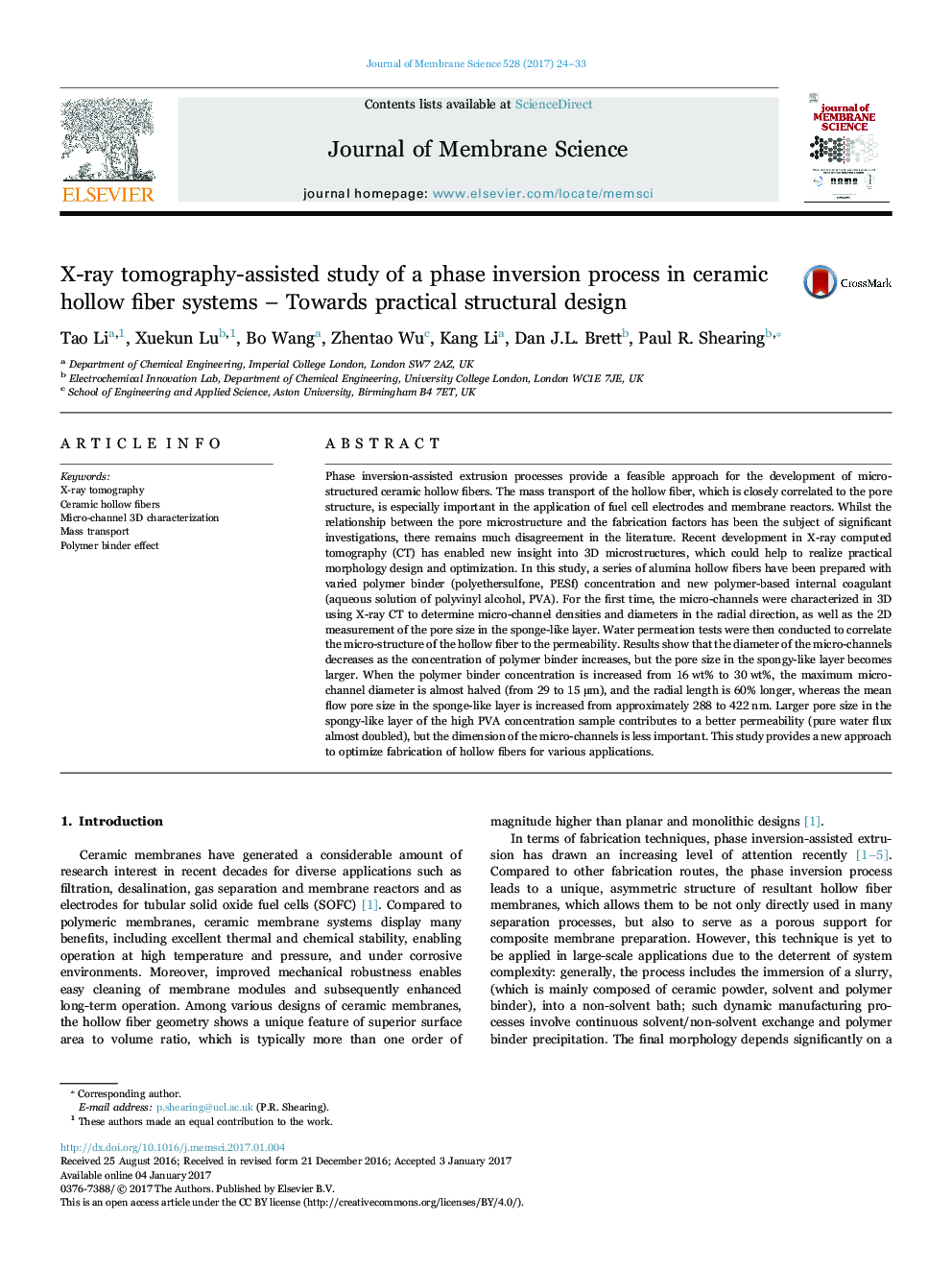| کد مقاله | کد نشریه | سال انتشار | مقاله انگلیسی | نسخه تمام متن |
|---|---|---|---|---|
| 4989144 | 1455971 | 2017 | 10 صفحه PDF | دانلود رایگان |
- Phase inversion intrusion applied for controllable fabrication.
- Hollow fibers with tailored microstructure demonstrated.
- Non-destructive X-ray CT used to visualise hollow fiber in 3D.
- Micro-channel diameter and density quantified for the first time in 3D.
- Binder of high polymer concentration contributes to improved water permeability.
Phase inversion-assisted extrusion processes provide a feasible approach for the development of micro-structured ceramic hollow fibers. The mass transport of the hollow fiber, which is closely correlated to the pore structure, is especially important in the application of fuel cell electrodes and membrane reactors. Whilst the relationship between the pore microstructure and the fabrication factors has been the subject of significant investigations, there remains much disagreement in the literature. Recent development in X-ray computed tomography (CT) has enabled new insight into 3D microstructures, which could help to realize practical morphology design and optimization. In this study, a series of alumina hollow fibers have been prepared with varied polymer binder (polyethersulfone, PESf) concentration and new polymer-based internal coagulant (aqueous solution of polyvinyl alcohol, PVA). For the first time, the micro-channels were characterized in 3D using X-ray CT to determine micro-channel densities and diameters in the radial direction, as well as the 2D measurement of the pore size in the sponge-like layer. Water permeation tests were then conducted to correlate the micro-structure of the hollow fiber to the permeability. Results show that the diameter of the micro-channels decreases as the concentration of polymer binder increases, but the pore size in the spongy-like layer becomes larger. When the polymer binder concentration is increased from 16 wt% to 30 wt%, the maximum micro-channel diameter is almost halved (from 29 to 15 µm), and the radial length is 60% longer, whereas the mean flow pore size in the sponge-like layer is increased from approximately 288 to 422 nm. Larger pore size in the spongy-like layer of the high PVA concentration sample contributes to a better permeability (pure water flux almost doubled), but the dimension of the micro-channels is less important. This study provides a new approach to optimize fabrication of hollow fibers for various applications.
Journal: Journal of Membrane Science - Volume 528, 15 April 2017, Pages 24-33
